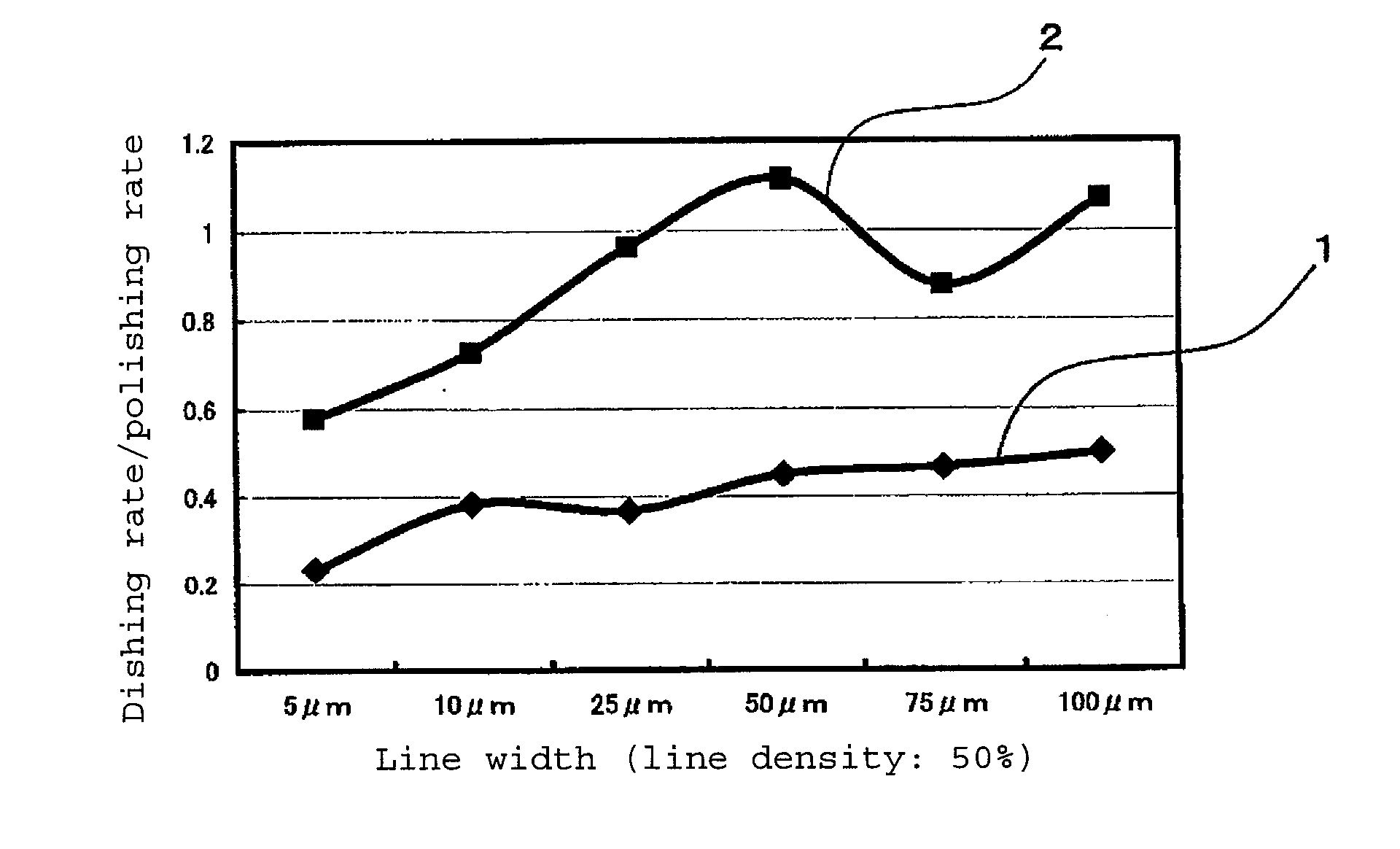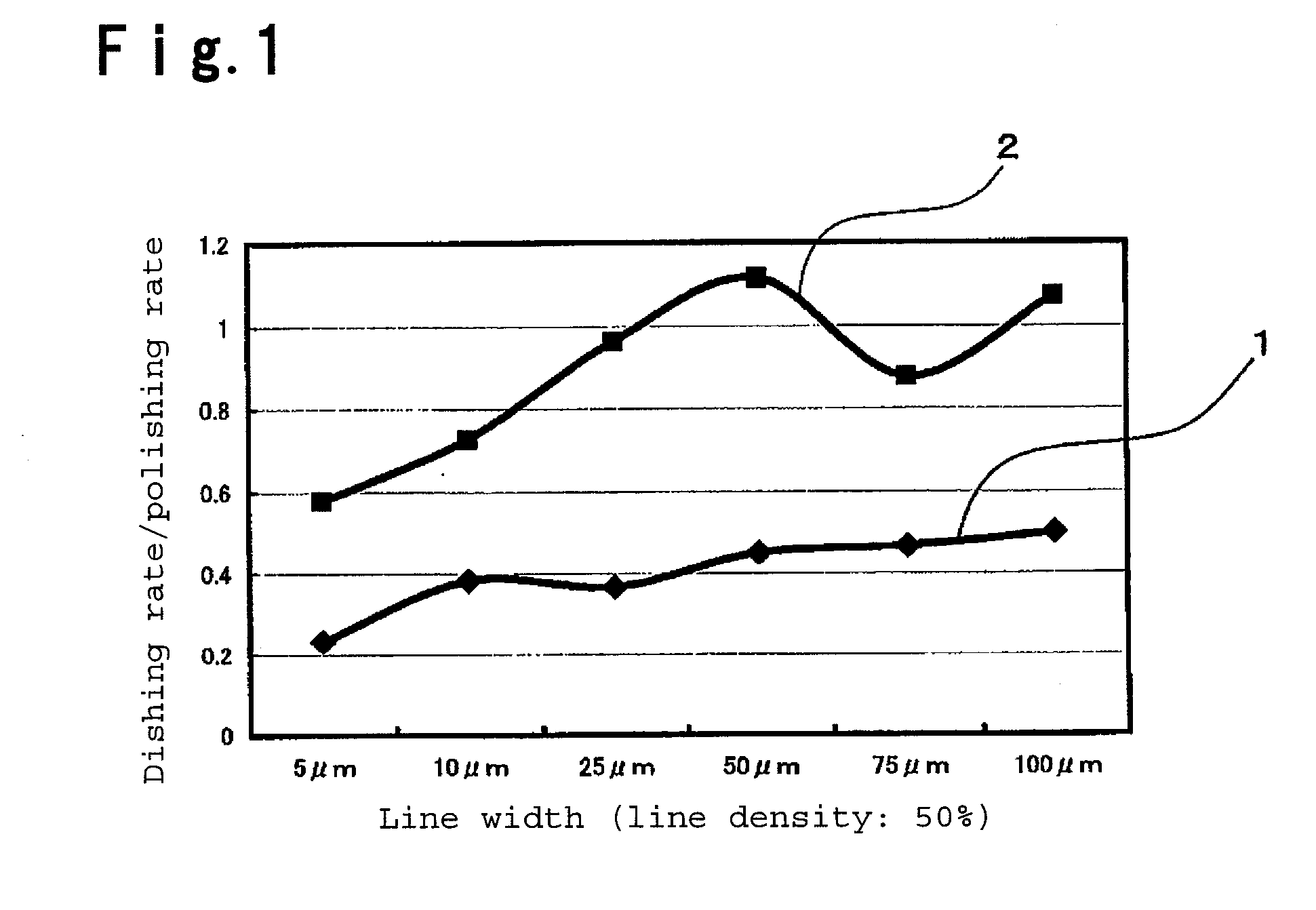Polishing compound for copper wirings and method for polishing surface of semiconductor integrated circuit
a technology of integrated circuits and polishing compounds, which is applied in the direction of polishing compositions with abrasives, basic electric elements, electric instruments, etc., can solve the problems of not being fully satisfactory, unable to form a wiring as designed, and the cmp is known to have problems to be solved, etc., to achieve excellent surface state, and good surface polishing
- Summary
- Abstract
- Description
- Claims
- Application Information
AI Technical Summary
Benefits of technology
Problems solved by technology
Method used
Image
Examples
example 1
[0087] The composition of a polishing compound was as follows.
Alumina0.1mass %Tartaric acid (stability constant: 6)1mass %Malonic acid (stability constant: 5)1mass %BTA0.03mass %EDTA (stability constant: 19)0.1mass %Tris(hydroxymethyl)aminomethane3.9mass %Waterthe rest
[0088] To 100 parts by mass of the above composition, 5 parts by mass of a 30% hydrogen peroxide aqueous solution was added to finally adjust the proportion of hydrogen peroxide in the polishing compound to be 1.4 mass %. In Examples 1 and 2, the alumina was 5-alumina, and its average particle diameter was 0.013 μm and its specific surface area was 100 m2 / g.
[0089] With the above polishing compound, polishing was carried out under the following conditions.
Object to be Polished
[0090] A 8-inch wafer (000CUR015, manufactured by Sematech) having a 1,500 nm thick Cu layer formed on a Si substrate by wet plating, was used as a wafer for evaluating a copper removal rate.
Patterned Wafer
[0091] A 8-inch wa...
example 2
[0101] The composition of the polishing compound was as follows.
Alumina0.1mass %Tartaric acid (stability constant: 6)2mass %BTA0.01mass %Tris(hydroxymethyl)aminomethane4.2mass %Waterthe rest
[0102] To 100 parts by mass of the above composition, 3.3 parts by mass of a 30% hydrogen peroxide aqueous solution was added to finally adjust the proportion of hydrogen peroxide in the polishing compound to be 1 mass %.
[0103] With the above polishing compound, polishing was carried out under the same conditions as in Example 1 to obtain the results shown in FIG. 1.
[0104] As is evident from the comparison in FIG. 1, in Example 2 wherein no EDTA was incorporated, the ratio of dishing to usual removal rate (dishing rate / polishing rate) is substantially 1 i.e. the polishing speeds being the same at the line widths of at least 25 μm. This means that even if the terminal point of polishing is reached, if the polishing is continued, the removal will proceed with the same removal rate.
[0105] Where...
PUM
 Login to View More
Login to View More Abstract
Description
Claims
Application Information
 Login to View More
Login to View More - R&D
- Intellectual Property
- Life Sciences
- Materials
- Tech Scout
- Unparalleled Data Quality
- Higher Quality Content
- 60% Fewer Hallucinations
Browse by: Latest US Patents, China's latest patents, Technical Efficacy Thesaurus, Application Domain, Technology Topic, Popular Technical Reports.
© 2025 PatSnap. All rights reserved.Legal|Privacy policy|Modern Slavery Act Transparency Statement|Sitemap|About US| Contact US: help@patsnap.com



